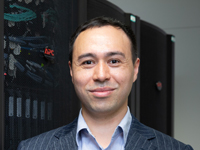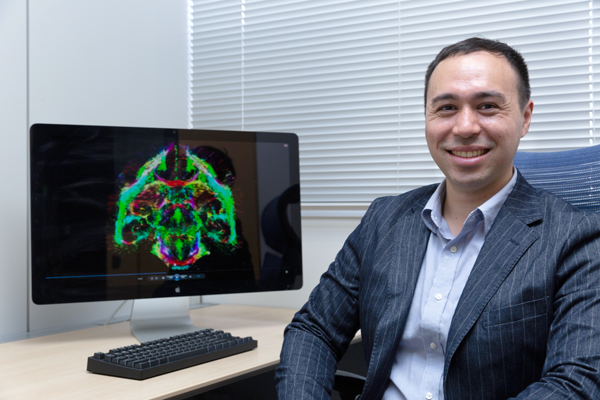Jul. 7, 2021
Managing a marmoset brain atlas
Alexander Woodward, Unit leader

Connectome Analysis Unit, RIKEN Center for Brain Science
Describe your role at RIKEN.
I lead a group that is a member of Japan’s Brain/MINDS project that focuses specifically on the brain of the common marmoset. My group works on neuroinformatics applied to digital brain atlases and online database development. One of our current focuses is upgrading a digital marmoset brain atlas that we previously developed for Brain/MINDS.
Digital atlases are important to large-scale brain-mapping projects because you need a common digital space for integrating and organizing data from diverse experiments in 3D. Marmoset research has also become quite active in recent years, due to what it can reveal about human brain structure and function. Other activity from our group includes the work of Rui Gong, who has worked on how to improve atlas construction using artificial intelligence, and Takuto Okuno, who has developed a new method for causal analysis of functional brain networks where different regions are defined by a brain atlas.
How did you become interested in your current research?
I studied computer vision at the University of Auckland, New Zealand. A big focus was on how to get in-depth information from images by using a computer. I now apply these techniques to neuroimaging data.

How and when did you join RIKEN?
I joined RIKEN about six years ago as a member of Yoko Yamaguchi’s Neuroinformatics Unit. Before that I completed a post-doc at the University of Tokyo with Takashi Ikegami. The lab there focused on complex systems and artificial life.
How has being at RIKEN helped your research?
Being able to interact with RIKEN’s world-class researchers in neuroscience has definitely helped further my understanding of the brain. Additionally, working at RIKEN has meant we have always been able to get the computer equipment we need. Being a core part of Japan’s Brain/MINDS project has also expanded my network within the neuroscience community.
What are some technologies you use?
We are always processing and mapping datasets on to one another or on to brain atlases. To do this we rely on image registration (mapping) algorithms. One of the key pieces of software we use to do this is called ANTs (Advanced Normalization Tools). We also use popular deep-learning libraries such as TensorFlow and PyTorch, and have recently been looking at how to use artificial intelligence running through web browsers. We have also been leveraging a high-performance computing cluster to batch process thousands of brain images.
What has been your most memorable experience at RIKEN?
I have fond memories of traveling, which has often been linked to the International Neuroinformatics Coordinating Facility (INCF).
